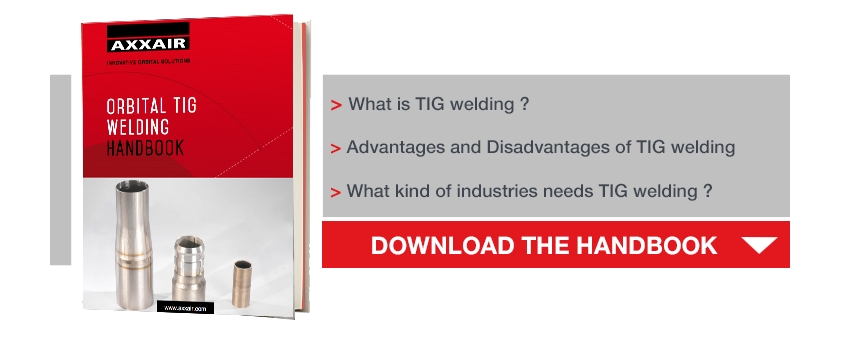Today, we have many different ways of welding tube and pipe. Since the beginning of the 20th century, many inventors and engineers have been looking for new ways and technologies for welding in order to adapt to the everchanging requirements of the market and the clients themselves, as well as to the growing amount of different materials.
Below, we listed the different technologies for welding tubes and pipes that exist today while taking a closer look at their advantages :
Welding with an electrode
This method of welding tubes has existed since the beginning of the last century and is certainly the most common welding technique due to its ease of use and the low cost. A welding rod serves as an electrode and only a single parameter has to be taken into account: the welding current. There is no need for a protective gas when welding with an electrode since the metallic coating of the welding rod produces smoke when heated, which will create a gas protection around the weld. The choice of welding rod and its coating depends on the materials that are to be welded.
Semi-automated welding (MIG MAG)
This welding method was mainly invented and developed during the two World Wars as the production of tanks and other military equipment required a high level of efficiency.
The difference between "MIG" and "MAG" is the gas used by the welding power supply:
MIG = Metal Inert Gas
MAG = Metal Active Gas
When welding with MIG, a welding torch and a shielding gas will be used to protect the weld bead. As opposed to TIG welding, no electrode is used. It is the filler wire that transmits the current. Said filler wire with a very small diameter creates the arc which heats up the metal very quickly. In other words, it is the filler wire that serves as the electrode.
Submerged Arc Welding (SAW)
Submerged Arc Welding is not a very common way of welding and only exists as an automated or semi-automated version. The weld joint is created with the help of an arc which is submerged in powdered flux. Next, a wire is unwound from a coil. No gas is used, since protection is provided by the flux, just as in simple rod welding, except that in this process the coating comes in the form of a powder. At the base of the powder coating, the arc is created on the inside. The powder coating then melts into the metal. Instead of a wire you can also find strips that act as filler material.
Tungsten Inert Gas welding (TIG)
TIG welding (Tungsten Inert Gas) was developed around the middle of the last century. In this process, the electrode does not equal the filler metal, which means that the adding of filler metal – if necessary – can be controlled independently. TIG welding is the only welding method where the electrode creates the arc with the workpiece in order to melt the metal.
The welding power supply will generate a high-frequency current, which is required to create an arc that is not touching the workpiece. This process, which is commonly used for tube welding applications, is particularly popular because of its ability to perfectly control the weld bead. TIG welding is available as a manual, semi-automated or fully automated version.
High energy density welding (HED)
These welding techniques are not very common because the necessary equipment is extremely expensive (several million euros). At present, there are three high energy density welding technologies: plasma welding, electron beam welding and laser beam welding. These techniques offer more or less the same advantages: they are very fast processes that can weld very large thicknesses. The energy of the gas is used to condense the arc, which increases the welding performance for plasma. If necessary, the addition of filler wire is possible. Laser beam welding is popular in the fields such as medicals and electronics. Electron beam welding requires a vacuum chamber, which takes quite a long time to set up.



